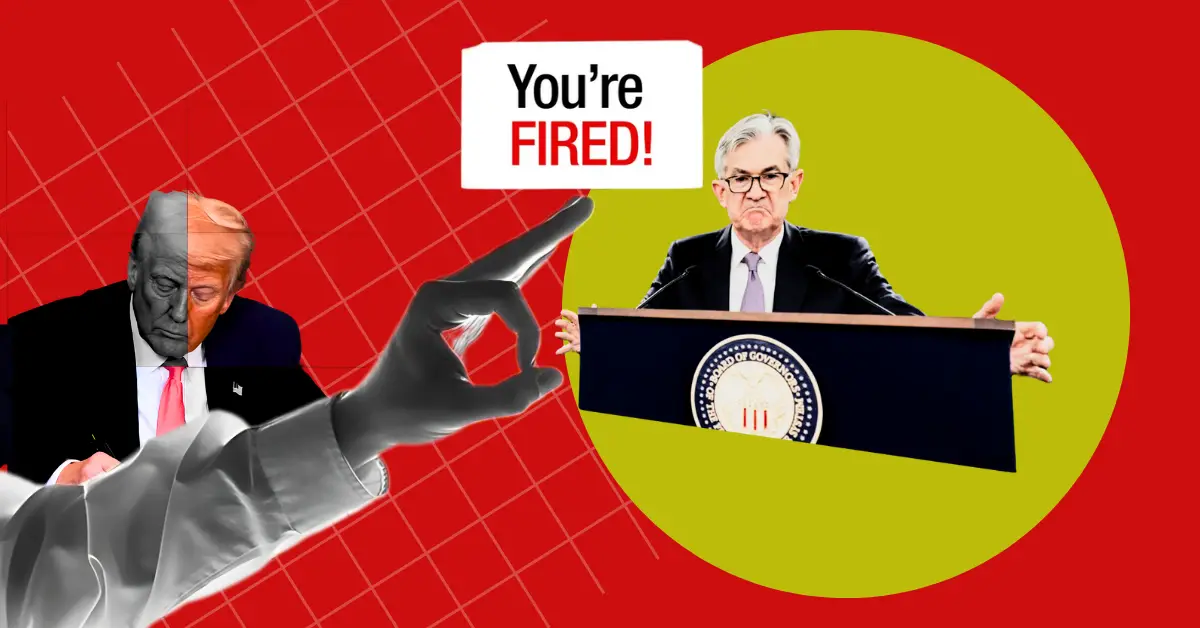The Rising Tensions Between Political Ambitions and Central Bank Independence
The ongoing clash between former President Donald Trump and Federal Reserve Chair Jerome Powell serves as a vivid illustration of the friction that can arise when political leadership collides with the autonomous nature of central banking. This conflict, unfolding predominantly in 2025, highlights the complex interplay between economic policy imperatives, legal constraints, and governance norms in the United States. Analyzing this confrontation reveals important lessons about monetary policy, market stability, and institutional resilience.
Understanding the Roots of the Conflict
At the heart of the dispute lies a fundamental disagreement over the timing and approach to interest rate adjustments. Trump’s persistent demand for immediate rate cuts reflects his priority on stimulating economic growth rapidly, particularly amid lingering concerns about trade tensions and inflationary pressures. In contrast, Powell’s cautious policy stance embodies the Federal Reserve’s mandate to maintain inflation control while ensuring overall economic stability.
This divergence was especially striking given that Trump appointed Powell in 2018, only to later publicly denounce his approach as “too late and wrong.” Trump’s rhetoric escalated from pointed criticisms to personal attacks, labeling Powell with derogatory terms and threatening swift replacement. Nonetheless, his simultaneous assertion that he did not intend to fire Powell reveals a nuanced political calculus—balancing the desire to project strength with recognition of institutional and market constraints.
Barriers to Political Overreach: Legal and Institutional Safeguards
The resilience of the Federal Reserve Chair amid intense political pressure owes much to legally enshrined protections and long-standing institutional conventions. Fed chairs serve fixed four-year terms that cannot be terminated at the executive’s discretion; removal is legally permissible only “for cause,” such as misconduct or incapacity. Such safeguards exist to ensure monetary policy decisions remain insulated from transient political winds.
Moreover, the market reaction to any US President attempting to oust a Fed Chair prematurely tends to be volatile and negative, creating significant deterrents against hasty executive action. Trump’s own acknowledgement of potential market upheaval underlines the pragmatic limits on his ability to directly influence the Fed through personnel changes. Analysts within his circle deemed any forced removal a form of “monetary malpractice,” underscoring how adherence to governance norms helps maintain economic confidence.
Monetary Policy at a Crossroads: The Clash of Economic Philosophies
The broader dispute is a microcosm of competing economic philosophies. Trump’s aggressive push for immediate rate cuts embodies a growth-first approach, emphasizing rapid stimulation to counteract trade-driven uncertainties and potential economic slowdowns. Powell’s Fed, conversely, pursues measured adjustments with an eye toward inflation targets and longer-term economic health.
Financial markets responded sensitively to these signals. Episodes of intense criticism from Trump led to investor losses and a weaker dollar, reflecting anxiety over policy unpredictability. Conversely, moments when Trump reduced his rhetoric brought brief reprieves and market stabilization. This dynamic illustrates how political statements from leaders can influence market psychology, complicating monetary policy transmission and injecting risk premiums.
The Political Theatre Behind Monetary Debates
Trump’s public disparagement of Powell also functions as a strategic performance aimed at rallying political support, shaping public perception, and pressuring the Federal Reserve to align with his administration’s goals. The use of inflammatory nicknames and social media amplifies the spectacle, heightening visibility and stakes in an era defined by media-driven politics.
Yet this spectacle simultaneously exposes tensions inherent in the American governance system. Central bank independence remains a pillar designed to shield monetary policy from the volatility of electoral politics, while elected leaders inherently seek to influence economic outcomes on behalf of their constituents. Trump’s contradictory signals—intense attacks coupled with denials of firing plans—reflect this uneasy balance between exerting influence and respecting institutional boundaries.
Broader Implications: Lessons on Institutional Independence and Economic Stability
This political-economic drama highlights the indispensable role of Federal Reserve independence in preserving financial stability. Attempts to undermine this independence risk eroding market trust, destabilizing investment climates, and heightening economic vulnerability to political cycles. While democratically accountable leadership is vital, clear separation between fiscal policy direction and monetary policymaking ensures decisions are made thoughtfully and free from partisan pressures.
Furthermore, this episode reveals how personal animosities and media spectacles increasingly shape policy discourse in modern governance. The Trump-Powell conflict is not just about economics; it is an illustration of how personality, politics, and public communication intertwine with institutional functions, complicating the economic policymaking environment.
Resonating Conclusion: Navigating the Delicate Balance of Power
The conflict between Donald Trump and Jerome Powell offers a cautionary tale about the delicate dance required between political leadership and central bank autonomy. Pressures for immediate economic results can clash sharply with the measured, expert-driven decisions essential for sustained stability. Despite aggressive political posturing, existing legal frameworks and market realities have so far safeguarded the Federal Reserve’s independence.
Looking ahead, the episode underscores the broader imperative to respect institutional boundaries that facilitate sound economic governance. The stability of national economies hinges on the ability of central banks to operate free from short-term political interference, making decisions that balance growth, inflation, and risk with foresight and expertise. Policymakers, market participants, and citizens alike must appreciate this fragile equilibrium to ensure confidence in the institutions that uphold economic prosperity.

